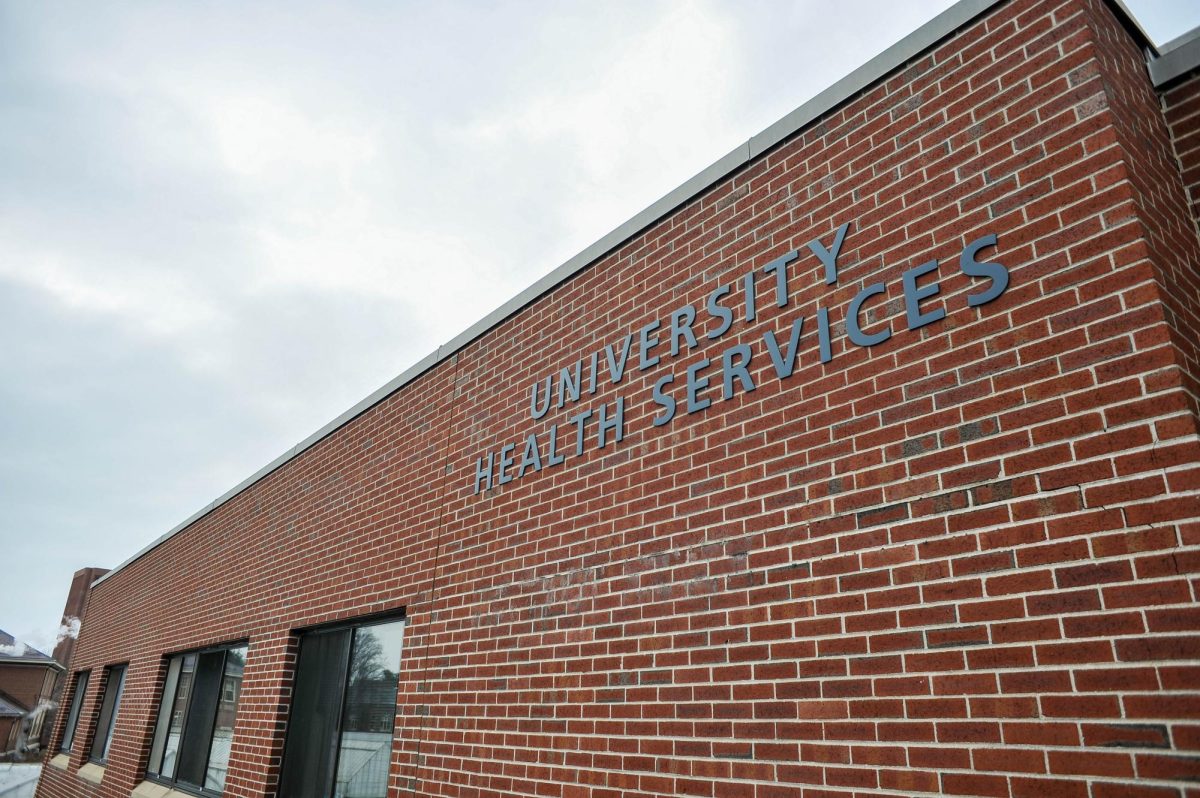If you leave the Franklin Dining Commons and head toward the W.E.B. Du Bois library, you will pass the University of Massachusetts Hydro farm on your right, where we use in-depth knowledge of plant physiology and hydroponic technology to grow fresh and delicious romaine lettuce. Try looking in the windows – you will see a series of tables, incandescent and colored LED lights and plants growing in a variety of ways. To the right of the entrance is even a fish pond, where koi fish fertilize swiss chard and herbs with their feces! This is a technique called aquaponics, and on some larger scale operations, these fish are grown for their meat at the same time they are grown as organic fertilizing machines. This pond is just one example of how UMass Hydro is a hub of organic farming innovation.
I have been working at UMass Hydro since the beginning of the semester when my friend Colin gave me a tour of the place. It was exciting to see how everything works. Try knocking on the door when you see us working there or send us an email at [email protected].
We would love to give you a tour. We want more people to know about what we’re doing because right now we’re working on a few grant opportunities. One to build a newer, bigger, aquaponic pond and another to build a significantly larger operation at a new location. I work at UMass Hydro for credit, and I do about six hours of work a week. I come in, check the duty list and I’m off.
Mainly, I am focused on disease management. Hydroponic lettuce in particular gets powdery mildew – a white, powder-like fungus that grows on the surface of dry leaves. They are dry because hydroponic crops do not need to be watered. All that they need for water is supplied by the nutrient solution that their roots dangle into, while they float on foam rafts. The plants don’t drown because the water is oxygenated by a waterfall, cool! It’s a pretty small waterfall flowing out of a few tubes, but you can imagine what a bigger hydroponic operation might have, like the one we might get to build. We’ve found that powdery mildew can be easily, effectively and organically managed through the use of a sprayer filled with potassium bicarbonate, similar to baking soda, soap, water and neem oil, a vegetable oil from the neem tree, native to India –Azadirachta indica. I’ve been enjoying spraying the leaves of the lettuce from top to bottom, and all the powdery mildew has disappeared. This neem oil solution we make is of course safe, both to humans and to plants, actually providing a helpful potassium supplement, and we wash off the leaves during harvest. We’ve also dealt with Pythium root rot, a fungal-like disease of plants, which we seem to have solved using a compost tea – basically a probiotic for plants made from compost, molasses and air.
Come into UMass Hydro to learn more. We sell our lettuce to Franklin Dining Commons, Greenough Sub Shop and Belly of the Beast, but we are always looking to expand our operation, and we could always use your support. Not to mention, we love showing people what we do. We are all enthusiastic agricultural science majors – with majors like plant, soil and insect science, horticultural science, sustainable food and farming – motivated about our field. We want to bring delicious, nutrient-dense food to as many people as we can, using the most sustainable and ethical practices we can devise. That is our mission.
Erik Vegeto




















amy • Feb 27, 2019 at 7:29 pm
UMass Hydro, a hub for weed.
Yeahhhh man! Any pot smoker knows what I am talking about. *wink*